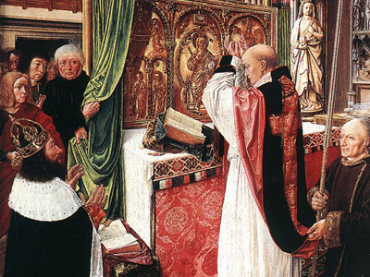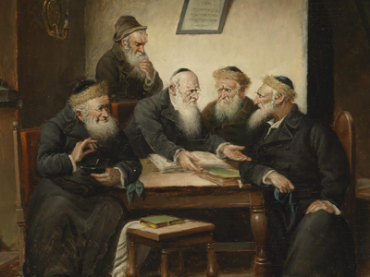Religion
Humanity’s Sin in Paradise
Ephrem, Jacob of Sarug, and Narsai in Conversation
Series: Analecta Gorgiana 1050
ISBN: 978-1-4632-0098-5
Van Rompay discusses Jacob of Sarug’s understanding of sin by interweaving a conversation with 4th-century Ephrem’s influence and Jacob's late 5th-century contemporary thinker, Narsai. Critical to this discussion is their assumption of Adam’s created capacities.
$35.00
Remembering Music in Early Greece
Series: Analecta Gorgiana 1052
ISBN: 978-1-4632-0100-5
This paper contemplates the various means by which the Ancient Greeks preserved information about their musical history, highlighting oral/aural tradition and the transition to literacy when inscriptions could capture information in roughly datable contexts. Music history sources and motives are also examined.
$40.00
From Music Archaeology to Historiography
Andean Music Archaeology and Musical Instruments, Singing and Dancing in Guaman Poma's Nuéva Crónica y Bien Gobierno
Series: Analecta Gorgiana 1053
ISBN: 978-1-4632-0101-2
Hickmann describes a 17th century work by Guaman Poma chronicling the first period of the Conquista. Details from this book are comparable to archaeological finds of musical instruments that have since disappeared. The author provides illustrations of ancient Andean instruments.
$36.00
Music-Archaeological Research on Pre-Columbian Music Cultures 1880-1920
Series: Analecta Gorgiana 1054
ISBN: 978-1-4632-0102-9
This paper contains an overview of Pre-Columbian music research between 1880 and 1920. Figures and the interdisciplinary direction of the research movement are discussed in detail. Many of these early studies remain ignored, which is a concern for music historiography.
$37.00
Antiquarians, Archaeologists and Music in Nineteenth Century London
Early Conversations in Music’s Prehistory
Series: Analecta Gorgiana 1055
ISBN: 978-1-4632-0103-6
Proceedings from the British Archaeological Association contain music studies from 150 years ago. Lawson raises a historiographical concern for these early discussions, as many of the authors are forgotten.
$37.00
Studies of Ancient Nordic Music, 1915–1940
Series: Analecta Gorgiana 1056
ISBN: 978-1-4632-0104-3
The pioneers who contributed towards the formative period of Scandinavian musicology (ca. 1915–1940) were highly interested in ancient music. Kolltveit describes approaches by pioneers Hammerich, Panum, Andersson, Norlind, Leden and Tveitt in their cultural, political, and academic contexts.
$38.00
Music Archaeology in Scandinavia, 1800-1990
Series: Analecta Gorgiana 1057
ISBN: 978-1-4632-0105-0
Lund describes the development of Scandinavian music history from 1797 with the first discovery of lurs in Denmark to the modern discipline as it is established in research during the 19th and 20th centuries. Systematic orientation came in the 1970s.
$38.00
Rhapsody in Blue
The Origin of God's Footstool in the Aramaic Targumim and Midrashic Tradition
Series: Analecta Gorgiana 1059
ISBN: 978-1-4632-0106-7
Three interpretative trends address the vision at the ratification of the Sinai covenant in Exod. 24:10. Traditions relate whether God or a throne was seen, as well as the consequences for this vision for the leaders and history of the Israelites.
$35.00
The Performance of Normativity
Mormons and the Construction of an American Masculinity
Series: Analecta Gorgiana 1069
ISBN: 978-1-4632-0116-6
This paper examines the construction of masculinity among male members of the Church of Jesus Christ of Latter-day Saints (Mormons) and its underlying historical factors.
$36.00
"He Was Pretty Good in There Today"
Reviving the Macho Christ in Ernest Hemingway's ""Today is Friday"" and Mel Gibson's The Passion of the Christ
By Lisa Tyler
Series: Analecta Gorgiana 1070
ISBN: 978-1-4632-0117-3
This paper examines the “muscular Christianity” phenomenon in Mel Gibson’s 2004 film The Passion of the Christ and Ernest Hemingway’s 1926 short play, “Today is Friday.”
$35.00
Haredi Male Bodies in the Public Sphere
Negotiating with the Religious Text and Secular Israeli Men
By Yohai Hakak
Series: Analecta Gorgiana 1074
ISBN: 978-1-4632-0121-0
This paper explores the Israeli Haredi community’s social construction of the male body.
$38.00
Ephrem the Syrian's Hymns on the Unleavened Bread
Translation and Introduction by J. Edward Walters
Series: Texts from Christian Late Antiquity 30
ISBN: 978-1-4632-0159-3
In this set of homilies Ephrem (306-373) invites the reader into a world of symbolic interpretation filled with imagination brimming beneath the surface of word-plays, alliteration, and typological comparisons. These hymns thrust the reader into the middle of a context in which Christians and Jews maintain competing practices of a Passover service to the extent that Ephrem feels the need to distinguish between the symbol and the reality. These homilies are presented in their Syriac original alongside an annotated English translation.
$41.00
In Search of the Seventy "Weeks" of Daniel 9
By George Athas
Series: Analecta Gorgiana 1077
ISBN: 978-1-4632-0124-1
Athas challenges the past assumptions by Book of Daniel scholars, especially with regard to the symbolism in Chapter 9. This exegesis provides a theory for chronological interpretation that includes dates for calculating the seventy weeks mentioned in Daniel's vision.
$35.00
The Contested History of a Book
The German Bible of the Later Middle Ages and Reformation in Legend, Ideology, and Scholarship
Series: Analecta Gorgiana 1079
ISBN: 978-1-4632-0126-5
This paper explores the common misconception that vernacular translations of the Bible were not available prior to Luther. In fact, Luther may have relied on these to accomplish his own work toward what became a more preferable translation.
$39.00
Priestly Power that Empowers
Michel Foucault, Middle-Tier Levites, and the Sociology of ‘Popular Religious Groups’ in Israel
Series: Analecta Gorgiana 1084
ISBN: 978-1-4632-0131-9
Christian analyzes priestly social dynamics in-depth as they develop through tribal history and specialization of tasks. He focuses on middle-tier Levites as their skills and specialized knowledge place them in upper classes but their work relegates them as intermediaries.
$51.00
The Ascription of Physical Disability as a Stigmatizing Strategy in Biblical Iconic Polemics
Series: Analecta Gorgiana 1087
ISBN: 978-1-4632-0134-0
This article presents the ascription of physical disability as a strategy to communicate disapproval of icons in various passages of the Hebrew Bible. Idols are characterized as unable to interact with worshipers and unable to function independently.
$34.00
Manchester Journal of Jewish Studies (2009)
ISBN: 978-1-4632-0154-8
Melilah is an interdisciplinary peer-reviewed journal concerned with Jewish law, history, literature, religion, culture and thought in the ancient, medieval and modern eras. Contributors (2009) include Cynthia Crewe (abstract only), Dvir Abramovich, Phillip Mendes, and Elliot Cohen.
$39.00
Covenant and Grace in the Old Testament
Assyrian Propaganda and Israelite Faith
ISBN: 978-1-60724-015-0
This book examines the Old Testament language about Israel’s relationship with God in the light of Assyrian royal propaganda. Unpacking this language’s meaning in both Assyrian and biblical contexts, it shows Israel borrowed language from Assyrian vassal treaties to describe its covenant with God, and this book reveals what “covenant” meant, and that it is not “covenant” at all, but “grace.” The broader theological implications of this discovery are explored in dialogue with contemporary theologians. The book takes seriously the study of text in its ancient context in order to highlight the theological content and its modern relevance.
$166.00
Journal for Late Antique Religion and Culture
ISBN: 978-1-4632-0147-0
The Journal for Late Antique Religion and Culture (JLARC) is a peer-reviewed free-access online journal edited by members of the Cardiff Centre for Late Antique Religion and Culture (CLARC) and published by Cardiff University (http://www.cardiff.ac.uk/clarc).
$42.00
Journal for Late Antique Religion and Culture
ISBN: 978-1-4632-0148-7
The Journal for Late Antique Religion and Culture (JLARC) is a peer-reviewed free-access online journal edited by members of the Cardiff Centre for Late Antique Religion and Culture (CLARC) and published by Cardiff University (http://www.cardiff.ac.uk/clarc).
$49.00
Journal for Late Antique Religion and Culture
ISBN: 978-1-4632-0149-4
The Journal for Late Antique Religion and Culture (JLARC) is a peer-reviewed free-access online journal edited by members of the Cardiff Centre for Late Antique Religion and Culture (CLARC) and published by Cardiff University (http://www.cardiff.ac.uk/clarc).
$57.00
Keter Shem Tov
Essays on the Dead Sea Scrolls in Memory of Alan Crown
Edited by Shani Tzoref & Ian Young
ISBN: 978-1-61143-866-6
This eclectic collection contains 16 articles on a variety of topics within Qumran Studies from a conference held in memory of the late Professor Alan Crown. Essays cover the impact of the Qumran discoveries on the study of the Hebrew Bible and the New Testament to the study of the scrolls themselves and the community organizations presupposed in them, focusing as well on topics as diverse as sexuality, scribal practice and the attitude to the Temple in the scrolls.
$184.00
The Sentences of the Syriac Menander
Introduction, Text and Translation, and Commentary
ISBN: 978-1-61143-488-0
The Sentences of the Syriac Menander appears in two Syriac manuscripts in the British Library, a full version in one codex, and a far shorter version, only a small fraction thereof, in another. This book presents a commentary on the text in its complete version focusing on parallels from both Jewish tradition and the Greco-Roman world, showing that the text is not, as it claims, the work of the Greek author Menander, but rather a work of Jewish Wisdom Literature composed in Syriac, possibly in the ancient city of Edessa itself, and preserved within Christian monastic circles.
$149.00
Early Christian Attitudes to War, Violence and Military Service
ISBN: 978-1-61143-486-6
The early Christians were not of one mind when it came to war, violence and military service. There was a bewildering variety of opinion as to how they understood their place in the world. It seems however that generally they did not stand apart from society. On the contrary, they were happy to integrate and conform and they often accepted war and service in the army as activities which did not raise specific ethical problems.
$182.00
Opening Heaven's Floodgates
The Genesis Flood Narrative, its Context, and Reception
Edited by Jason M. Silverman
Series: Biblical Intersections 12
ISBN: 978-1-61143-894-9
The narrative of Noah’s flood in Genesis draws perennial interest from scholars and the general public. Too often, however, historical and exegetical studies of the text, the story’s reception, and discussion of theological appropriation remain aloof from each other, if not at odds. This volume takes the influential nature of the flood story as an ideal opportunity to bring some of these methods into dialogue.
$218.00
Filter by
Filter by price
Filter by manufacturer



























